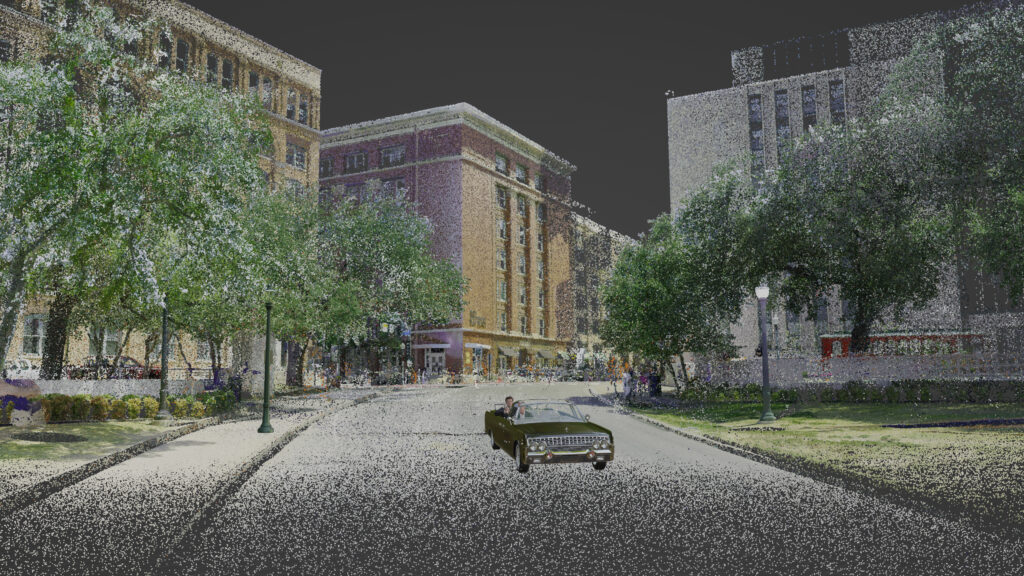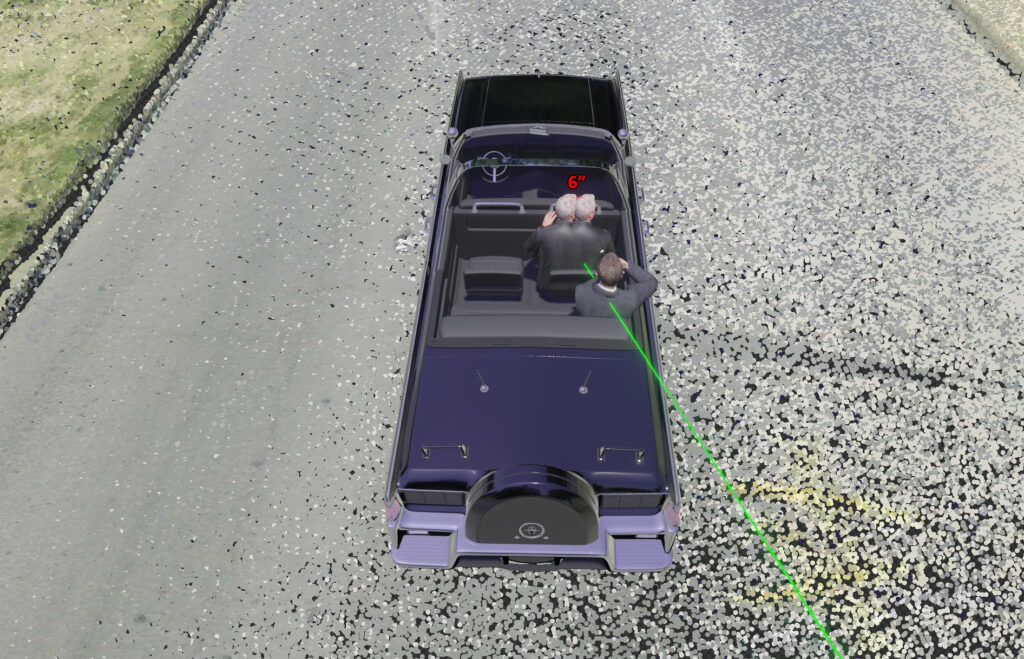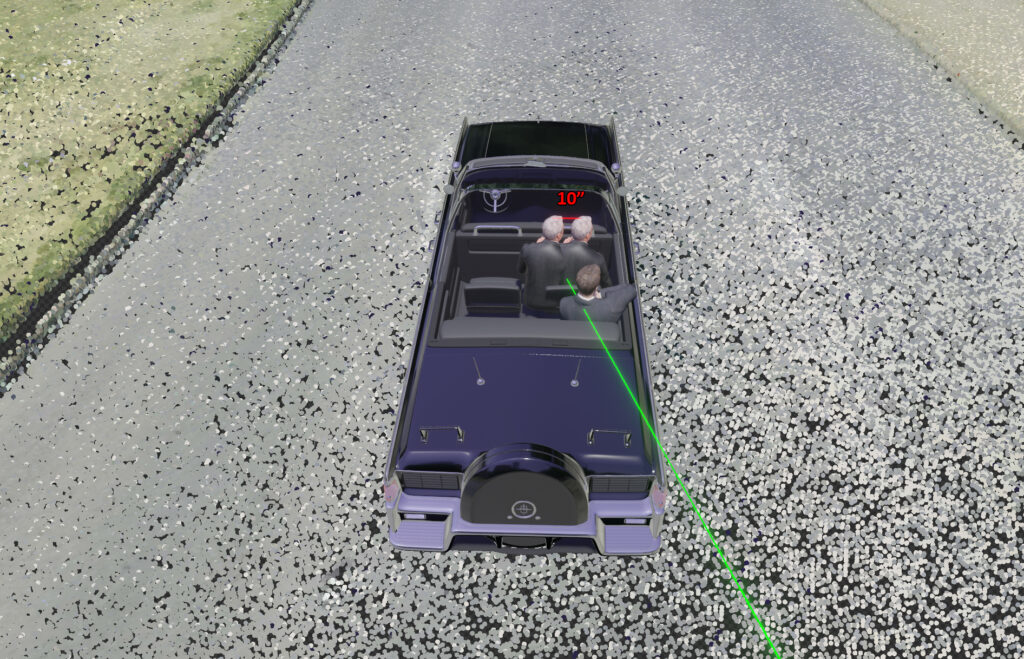
Knott Laboratory provides forensic engineering and animation, Civil & Structural, and Fire & Explosion Investigation services to reconstruct accidents.
Knott Lab presents digital reconstruction and findings on the assassination of President John F. Kennedy
State of the art forensic science refutes “single bullet theory”
Background
President Kennedy was assassinated on November 22, 1963, in Dealey Plaza in Dallas, Texas. The Warren Commission was assembled to investigate the shooting and issued a report in 1964 finding that Lee Harvey Oswald acted alone, firing a total of three shots in the incident. However, evidence suggests one of these bullet trajectories differed from what was presented by the Warren Commission. These findings have incredible ramifications as they could indicate a wider plot to kill the president.
Knott Laboratory was hired by John Orr, a former Justice Department attorney, who conducted his own investigation as a private citizen, making trips to the National Archives to review every document available. In fact, he was one of the few private citizens ever allowed by the Archives to examine original pieces of evidence in person. He viewed the president’s shirt, coat, necktie, bullet fragments, and the section of the curb struck by one of the bullets. Mr. Orr hired Knott Laboratory in 2018, seeking to understand if modern forensic engineering tools would corroborate or contradict his theory.
What’s become known as the “single bullet theory” concluded that one of the three shots fired from the window by Oswald struck both President Kennedy and Governor Connally. The report stated that the bullet hit Kennedy in the back, exited his neck, entered Governor Connally in the right armpit, exited his chest, went through his right wrist, and embedded in his left thigh. Knott Laboratory’s investigation and analysis focuses on this theory.
Scene Reconstruction
Using a 3D laser scanner (Leica RTC360), we conducted 36 laser scans of Dealey Plaza. This laser scanner captures up to two million points per second and HDR imagery, resulting in a point cloud, or digital twin, of the scene. This provides forensic engineers with a scientifically accurate model from which measurements can be taken. The Dealey Plaza point cloud has over 851 million data points.
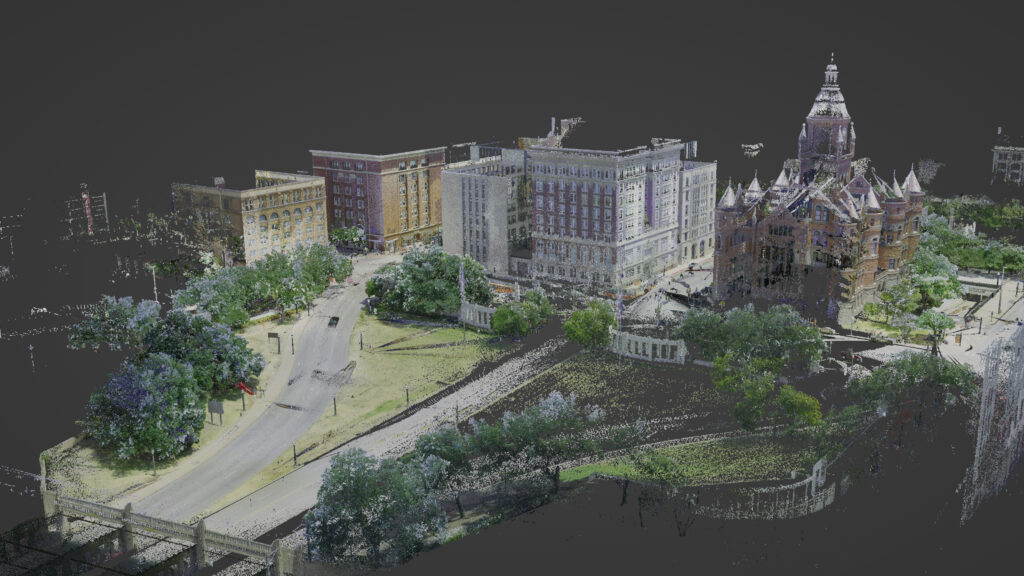
The next step was to reconstruct the scene to historic accuracy for November 22, 1963. To do so, our visualization experts used historic photographs of the plaza and presidential limousine, as well as the “Zapruder film,” which is widely considered the best video footage of the incident. Using a process called photogrammetry, the visualization team was able to place these images into the point cloud, syncing their locations within the scene. Altogether, 25 historic photographs and 7 frames of the Zapruder film were used for this photogrammetry.
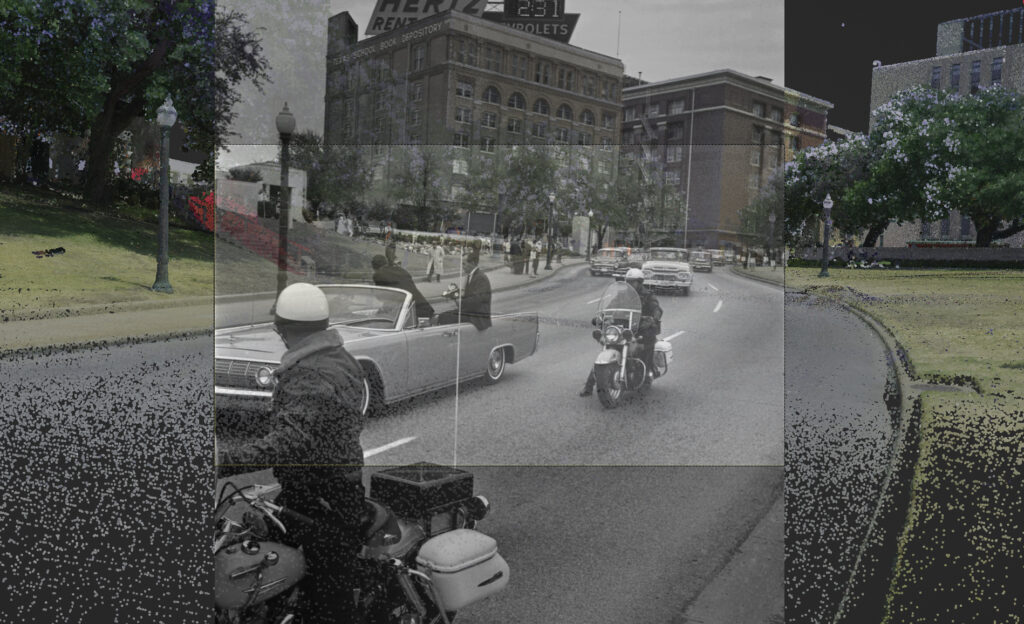
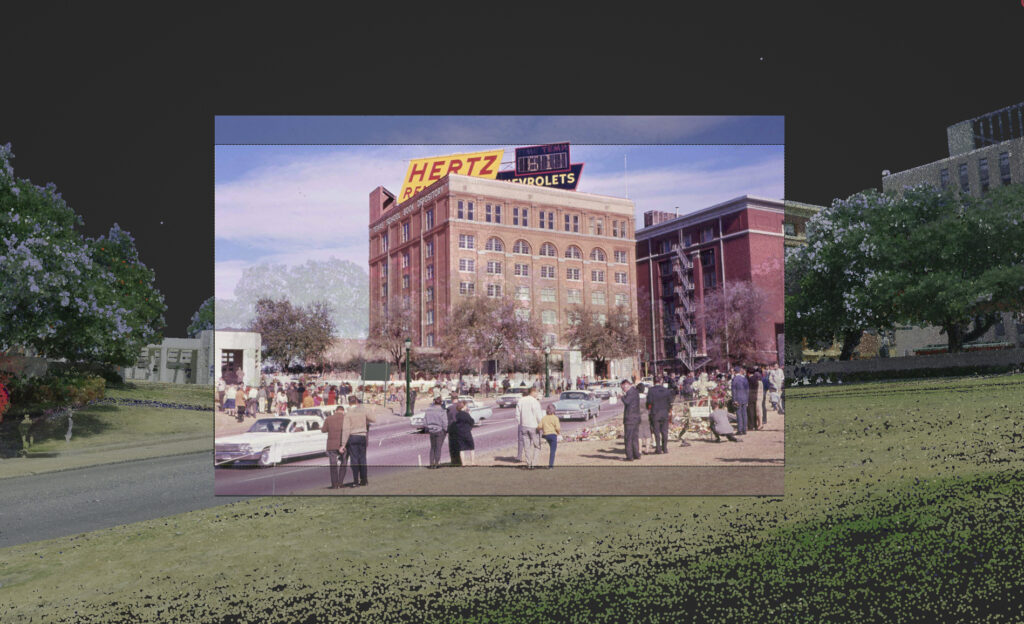
With the historic images matched to the point cloud, a few adjustments were discovered to be necessary to accurately reconstruct the scene. The lamp posts had been moved since 1963 to the grass area rather than along the sidewalk. We moved the two lamp posts that lay within the key Zapruder frames back to their original location. Additionally, we added and matched the position of the “Stemmons Freeway Keep Right” sign between the lamp posts. This sign partially obstructed the view in the Zapruder film along the limousine’s path. And finally, we discovered that roadway resurfacing projects over the decades had added 1-2 inches of pavement, so we lowered the pavement to further correct the scene for accuracy.
Photogrammetry, camera matching, camera tracking and object matching processes were also used to establish the location of Oswald’s perch, the correct dimensions of the limousine, create the digital models of President Kennedy and Governor Connally, and establish their positions, frame by frame, throughout the incident.
Analysis & Findings
With the scene reconstructed, and digital models of President Kennedy and Governor Connally created, an analysis of bullet trajectories could be conducted.
Using the Warren Report, autopsy drawings, and images of both President Kennedy and Governor Connally’s clothing, the bullet entry points on each individual were established in the digital model.
With the ability to measure distances, locations and angles from the point cloud, we could develop the exact trajectory between Oswald’s shooting position and points on each body. Our visualization experts tested bullet trajectories using the two frames from the Zapruder film (Z210 and Z225) where the first shots occurred.
For the single bullet theory to be true, the shooting position, bullet exit point on President Kennedy, and entry point on Governor Connally should all be reasonably in line. When drawing this line from the sixth-floor perch of the Texas Book Depository to the positions of the two men and their entry/exit points, we found a significant difference in both distance and angle.
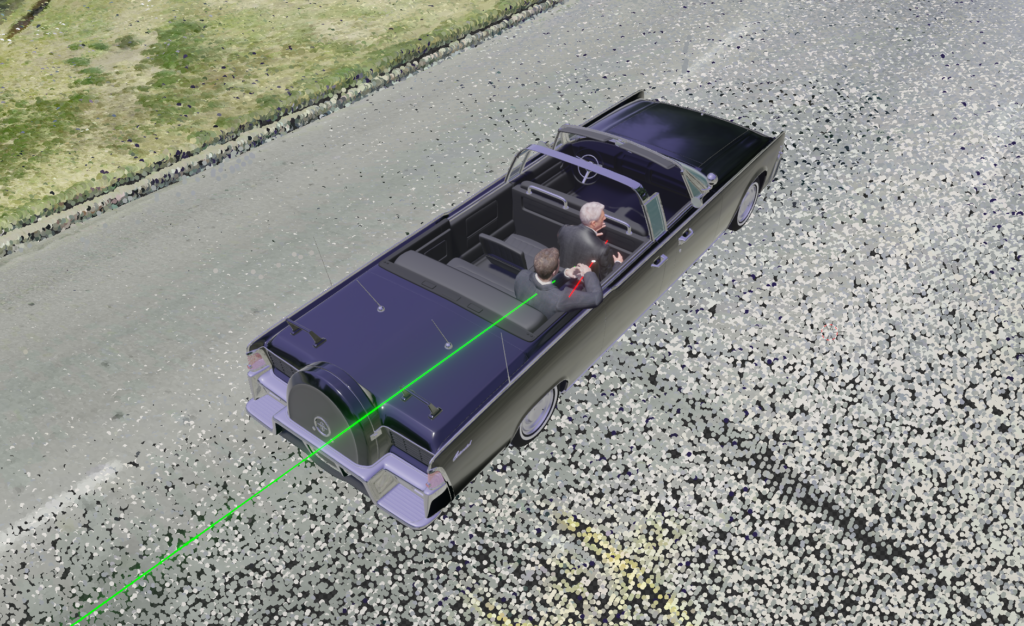
The green line indicates the bullet trajectory from Oswald’s perch to President Kennedy’s entry wound. The red line shows the bullet path through Governor Connally’s entry and exit wounds (see the visualization below for the full paths).
Further analysis revealed that for one shot to strike both President Kennedy and Governor Connally as detailed in the Warren Report, Governor Connally would have to be seated 6-10” toward the interior of the limousine, depending on if the shot occurred at Zapruder frame 210 or 225. We can see through the photogrammetry process that this is not his location.
Left photo – Connally’s actual position on the right and his position slid 6″ to the left for trajectory alignment.
Right photo – Connally’s actual position on the right and his position slid 10″ to the left for trajectory alignment.
This case is ongoing, but evidence strongly suggests there is more to the story in this historic event. Modern science refutes the Warren Commission’s findings on the assassination of President John F. Kennedy.
Visualization
Knott Laboratory’s complete visualization of the analysis of the “single bullet theory.”
Media Contact: Elaine Matthews | elaine@matthewspr.com


